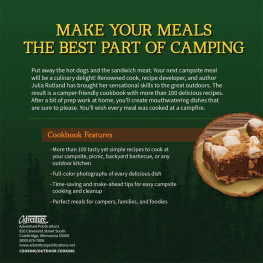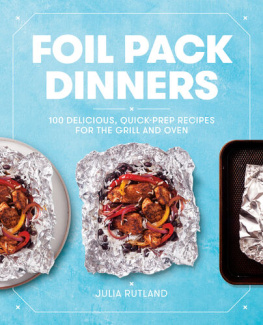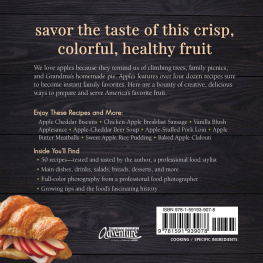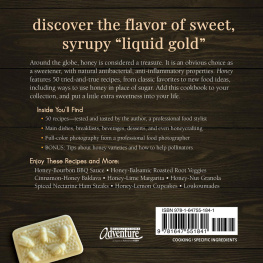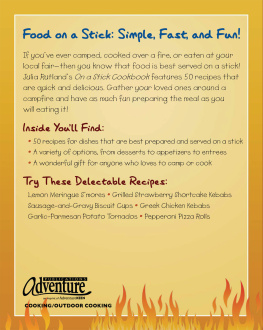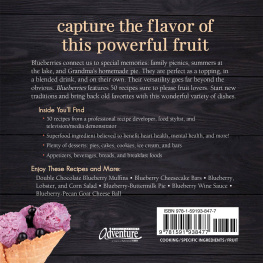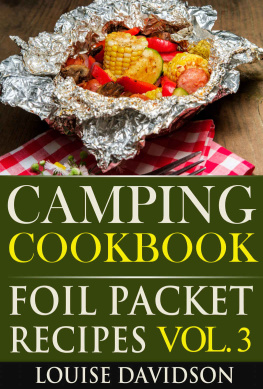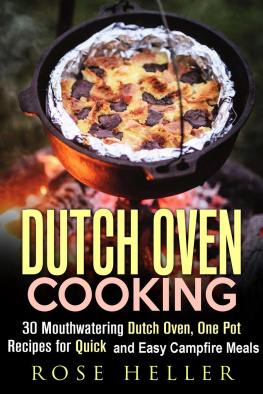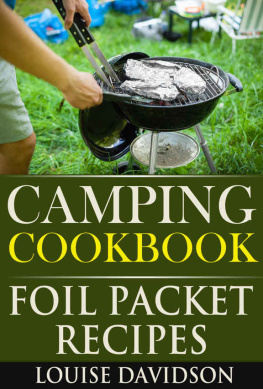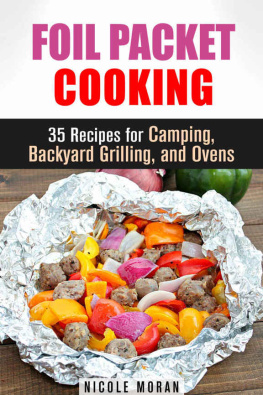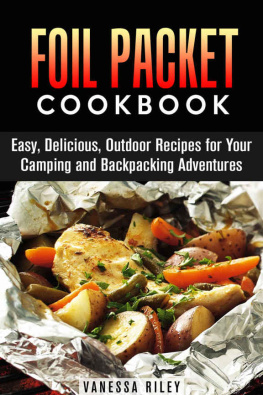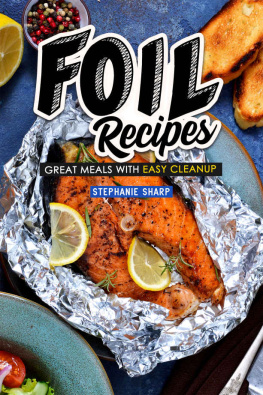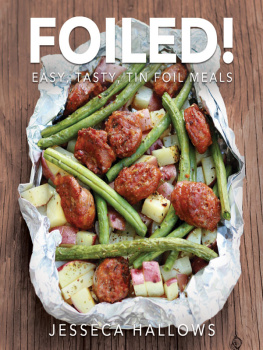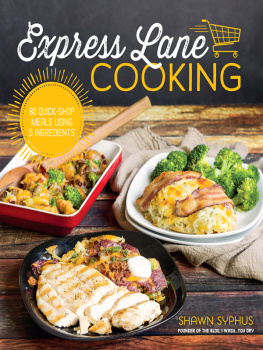Contents
Guide

An Imprint of Simon & Schuster, Inc.
1230 Avenue of the Americas
New York, NY 10020
www.SimonandSchuster.com
Copyright 2020 by Simon & Schuster, Inc.
All rights reserved, including the right to reproduce this book or portions thereof in any form whatsoever. For information, address Simon & Schuster Subsidiary Rights Department, 1230 Avenue of the Americas, New York, NY 10020.
First Tiller Press trade paperback edition May 2020
TILLER PRESS and colophon are trademarks of Simon & Schuster, Inc.
For information about special discounts for bulk purchases, please contact Simon & Schuster Special Sales at 1-866-506-1949 or .
The Simon & Schuster Speakers Bureau can bring authors to your live event. For more information or to book an event, contact the Simon & Schuster Speakers Bureau at 1-866-248-3049 or visit our website at www.simonspeakers.com.
Interior design by Matt Ryan
Cover photo by Liam Franklin
Cover design by Matt Ryan
Photography produced by Blueline Creative Group LLC.
Visit www.bluelinecreativegroup.com
Produced by Katherine Cobbs
Photography by Liam Franklin
Food Stylist: Margaret Monroe Dickey
Prop styling by Claire Spollen, Margaret Monroe Dickey, Katherine Cobbs
Food Stylist Assistant: Kady Wohlfarth
Library of Congress Cataloging-in-Publication Data
Names: Rutland, Julia Dowling, author.
Title: Foil pack dinners : 100 delicious, quick-prep recipes for the grill and oven / by Julia Rutland.
Identifiers: LCCN 2019056190 (print) | LCCN 2019056191 (ebook) | ISBN 9781982141080 (paperback) | ISBN 9781982141097 (ebook)
Subjects: LCSH: Dinners and dining. | Aluminum foil. | Quick and easy cooking. | LCGFT: Cookbooks.
Classification: LCC TX737 .R88 2020 (print) | LCC TX737 (ebook) | DDC 642dc23
LC record available at https://lccn.loc.gov/2019056190
LC ebook record available at https://lccn.loc.gov/2019056191
ISBN 978-1-9821-4108-0
ISBN 978-1-9821-4109-7 (ebook)
THERES NO REAL SECRET TO COOKING IN FOIL.
As a casual variation on the French technique of en papillote, or al cartoccio in Italian, foil pack dinners present an even simpler way to steam-cook seasoned meat or vegetables. A pouch is created by folding aluminum foil and sealing the ends. When heated, the food cooks in a sauce or in its own juices. Contained in the packet, the moist heat locks in flavor and keeps food juicy. The finished dish can be eaten directly from the package or slid onto a plate or bowl.
ALUMINUM FOIL 101
HEAVY-DUTY FOIL Sturdier than standard foil, heavy-duty aluminum foil is the most commonly used variety when creating packets. Available in twelve-inch and eighteen-inch widths, heavy-duty foil can cover any size bundle of food or cut of beef. Cheese and sugary foods will stick, so the interior should be coated with food spray, butter, or oil.
HEAVY-DUTY NONSTICK FOIL Hands down the most convenient foil for all uses is nonstick. One side of the foil is coated in a silicone-based polymer that makes food slide right off. Note: All rolls of aluminum foil have shiny and dull sides due to how theyre produced. In theory, the shiny side will reflect heat while the dull side absorbs it. Manufacturers say the difference is negligible and either side may be used; however, this is not the case for the nonstick foils. The food-safe, nonstick coating is on the dull side and will also be imprinted with the words nonstick side.
GRILLING FOIL This type of foil is designed to withstand the very high temperatures grills can reach, up to 600F. Some versions have a nonstick coating for convenience. You may see pitmasters foil. This type is extra-thick and strong enough for large and heavy cuts.
RECYCLED FOIL This foil is made from recycled aluminum that has been heated to high temperatures to ensure food safety. Aluminum foil can be recycled, but you will need to confirm that your local recycling station accepts it.
GRILLING BAGS These foil bags are constructed so you only have to place the food inside and roll up one end. Some versions have clear plastic windows so you can see the food cooking. Place the bags on a rimmed baking sheet before opening and cut open from the top.
STANDARD FOIL Avoid using standard foil for foil packs. If theres no way around it, use double or triple thickness. A single ply of regular foil is too thin. It can tear easily, resulting in a mess or a lost meal on the bottom of your oven or grill. Its thinness also means foods can scorch on the bottom.
TYPES OF PACKAGES
FLAT PACKAGES
Foods that benefit from browning, such as burgers and steaks, are often cooked in flat packages. Another reason to cover the meal in a flat package is when the recipe calls for flipping the package over to cook the other side. Use flat packs when the food can be turned with little risk of spilling liquid.
HOW TO ASSEMBLE
- Place ingredient(s) in the center of the foil.
- Bring the edges of the long sides of the foil together on top. Fold the foil several times until it is flat against the ingredients.
- Fold up the sides several times until flush against the food.
- To turn over while cooking, slide a silicone-coated or wooden spatula carefully under the package and flip over. Take care that the spatula does not pierce the foil. Plastic- or silicone-tipped tongs can also be used to turn the packages.
TENT-STYLE PACKAGES
Tent-style packages encourage steam produced by the cooking food to condense and drip back down over the food, basting it with moisture and flavor. They are assembled so that theres a pocket of air above the food.
HOW TO ASSEMBLE
- Place the ingredients in the center of the foil.
- Bring the edges of the long sides of the foil together on top. Fold a couple of times, leaving air space above the food.
- Fold up the sides, folding several times until theyre completely sealed.
- If necessary, rotate the packages or move to hotter/cooler areas of your grill by gripping the top seal with tongs. Any tongs may be used, but silicone- or plastic-tipped ones are less likely to tear the foil.
FOIL PACKETS 101
GO LARGEITS BETTER TO OVERESTIMATE THE SIZE YOULL NEED TO WRAP THE MEAL. If you arent keen on measuring, make sure the foil sheet is twice as long as the area of the food. The foil is too small if you cant get at least two or three folds at the seams. If theres doubt, tear off a new piece. Alternatively, you can place the too-small foil package in a larger piece of foil and seal the outer one.
CHEESE AND SUGARY FOODS LIKE JAM OR HONEY MAY STICK TO THE FOIL. Use nonstick foil, spray the interior side of the foil with cooking spray, or line the foil package with parchment paper.
CUT DENSE AND LONG-COOKING FOODS INTO THIN SLICES OR SMALL CUBES so they finish cooking at the same time as the rest of the meal.
SEASON, SEASON, SEASON! Moisture doesnt evaporate and will dilute herbs and spices. Season your food liberally.
CHICKENS ARE GROWING BIGGER! A serving of boneless chicken ranges from four to six ounces, yet chicken breasts can often be nine or ten ounces. Larger breasts will take longer to cook, and the exterior of the meat can become tough. Vegetables cooked with larger pieces of chicken may become overcooked. To solve this, use chicken breast cutlets you can purchase in the meat section, or split a thick chicken breast in half lengthwise.


